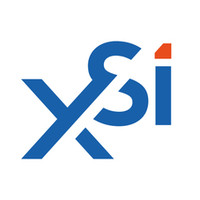by Todd Bone on October 30, 2018

Cisco is rolling out their new Smart Licensing System (Cisco FAQ) that looks very concerning as it will give the keys to your Cisco device to Cisco. What is Smart Licensing? For the new IOS XE version, 16.9 and later beginning with Catalyst 3650, 3850, and Catalyst 9000 series switches, these devices will be required to connect to the internet daily with call home feature to Cisco’s entitlement system to validate licensing. That takes the license entitlement off the devices and onto Cisco’s servers. Licenses now become subscription based instead of a perpetual license. If the device does not connect to the internet or validate entitlement, daily, and the device does not check-in within 30-days, the device will have a loss of functionality including the inability to reconfigure. There are some manual workarounds, but, this introduces a lot of administrative overhead to network management. Cisco’s Smart Licensing introduces a lot of risks to customers:
- You hand over the keys of functionality to Cisco. This increase the risk of network outages.
- Since the devices have to be connected to the internet for daily entitlement validation, this introduces security risks.
- If the switches aren’t connected to the internet, and manual workarounds are used, new processes and procedures need to be written and followed which introduces cost overheads and administrative challenges.
- Smart Licensing will restrict the ability to buy refurbished hardware.
- Smart Licensing may restrict the ability to use third party maintenance.
- When the lifecycle of the device hits Last-Day-of-Support (LDOS), Cisco has the keys and can just turn off functionality.
- Smart Licensing will eliminate residual value on your hardware purchases.
- A statement in Cisco’s EULA indicates they are not responsible for a business loss due to downtime, yet, not complying with Cisco Smart Licensing could do just that.
- Cisco Smart Licensing becomes the default method after upgrading to 16.9 for managing licenses.
- End-user control over your own infrastructure will decline.
Are you ready? What can you do if you do not like Cisco Smart Licensing?
- Chose another network hardware vendor.
- Invest in additional infrastructure and staff to manage the administration of licensing.
- Cry Antitrust foul: Tying arrangements may be challenged under Section 1 of the Sherman Act, which prohibits “contracts in restraint of trade,” Section 3 of the Clayton Act, which prohibits exclusivity arrangements that may “substantially lessen competition,” and Section 5 of the FTC Act, which prohibits “[u]nfair methods of competition.” Tying may also constitute conduct supporting a monopolization claim under Section 2 of the Sherman Act.
- Join Repair.Org to support Fair Repair Legislation which has bills in 18 states.
XSi is still investigating Cisco’s Smart Licensing System and will update this blog post as we learn more. We are also looking at how we can provide third party maintenance on models running 16.9 or over within Cisco’s rules. We urge customers of Cisco to be diligent and voice their opinions.

